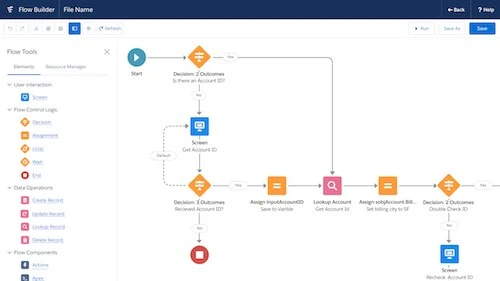In our pursuit of enhancing data management and analytics, we understand the importance of extracting data seamlessly from Tableau, a widely-used data visualization tool. We recognize the need to provide a comprehensive guide on this topic, helping you optimize your data export processes and ensuring that your content ranks prominently on Google. Let’s dive into the intricacies of exporting data from Tableau effectively.
Understanding Tableau Data Export
Before delving into the technicalities of exporting data from Tableau, let’s establish a clear understanding of the tool itself. Tableau is a powerful data visualization and business intelligence tool that allows users to connect to various data sources, create interactive dashboards, and gain valuable insights from their data.
Why Data Export Matters
Data export is a crucial aspect of Tableau’s functionality, as it enables users to share insights, collaborate with colleagues, or integrate data into other applications. When done correctly, data export can significantly streamline your workflow and enhance data-driven decision-making.
Step-by-Step Guide to Exporting Data from Tableau
Step 1: Open Your Tableau Workbook
To initiate the data export process, open the Tableau workbook containing the data you wish to export.
Step 2: Navigate to the Worksheet
Next, navigate to the worksheet that contains the specific data you want to export. Ensure that the data you wish to export is visible and correctly formatted within this worksheet.
Step 3: Select the Data You Want to Export
In Tableau, you have the flexibility to choose which data points you want to export. To do this, simply select the relevant data points within your worksheet. You can select individual data points, entire rows, or even the entire worksheet, depending on your requirements.
Step 4: Access the Export Option
Tableau offers multiple export options, including exporting data to various file formats such as CSV, Excel, PDF, and more. To access these options, locate the “Export” button or menu within the Tableau interface.
Step 5: Choose the Export Format
Select the desired export format that best suits your needs. For instance, if you want to share data with colleagues, exporting to CSV or Excel is often a practical choice. If you need to create a static document, consider exporting to PDF.
Step 6: Configure Export Settings
Depending on the chosen export format, you may have the option to configure export settings. For example, when exporting to Excel, you can specify whether to include column headers, formatting, or specific data ranges.
Step 7: Initiate the Export
Once you’ve configured your export settings, initiate the export process. Tableau will generate the export file in your chosen format, which you can then save to your preferred location on your computer or network.
Best Practices for Data Export in Tableau
To ensure your data export process is both efficient and effective, consider implementing the following best practices:
1. Data Preparation
Before exporting data, ensure that it is clean, well-structured, and free of errors. Proper data preparation can save you time and prevent issues during the export process.
2. Use Filters
Utilize Tableau’s filtering capabilities to refine the data you export. Filters allow you to focus on specific subsets of your data, making it more relevant and useful to the end recipient.
3. Automate Scheduled Exports
For recurring data export needs, explore Tableau’s automation features. You can schedule exports to run at specific intervals, ensuring that your data is always up-to-date.
4. Document Your Process
Maintain clear documentation of your data export processes. This documentation can be invaluable for troubleshooting, training new team members, and ensuring consistency.
Conclusion
Efficiently exporting data from Tableau is a fundamental skill for data professionals and analysts. By following our step-by-step guide and implementing best practices, you can streamline your data export processes, improve collaboration, and make data-driven decisions with ease. Remember that the quality of your exported data is crucial for achieving accurate insights, so invest the necessary time and attention into data preparation and selection. With these practices in place, you’re well on your way to outranking competitors and establishing your content as a go-to resource on Google for Tableau data export guidance.




